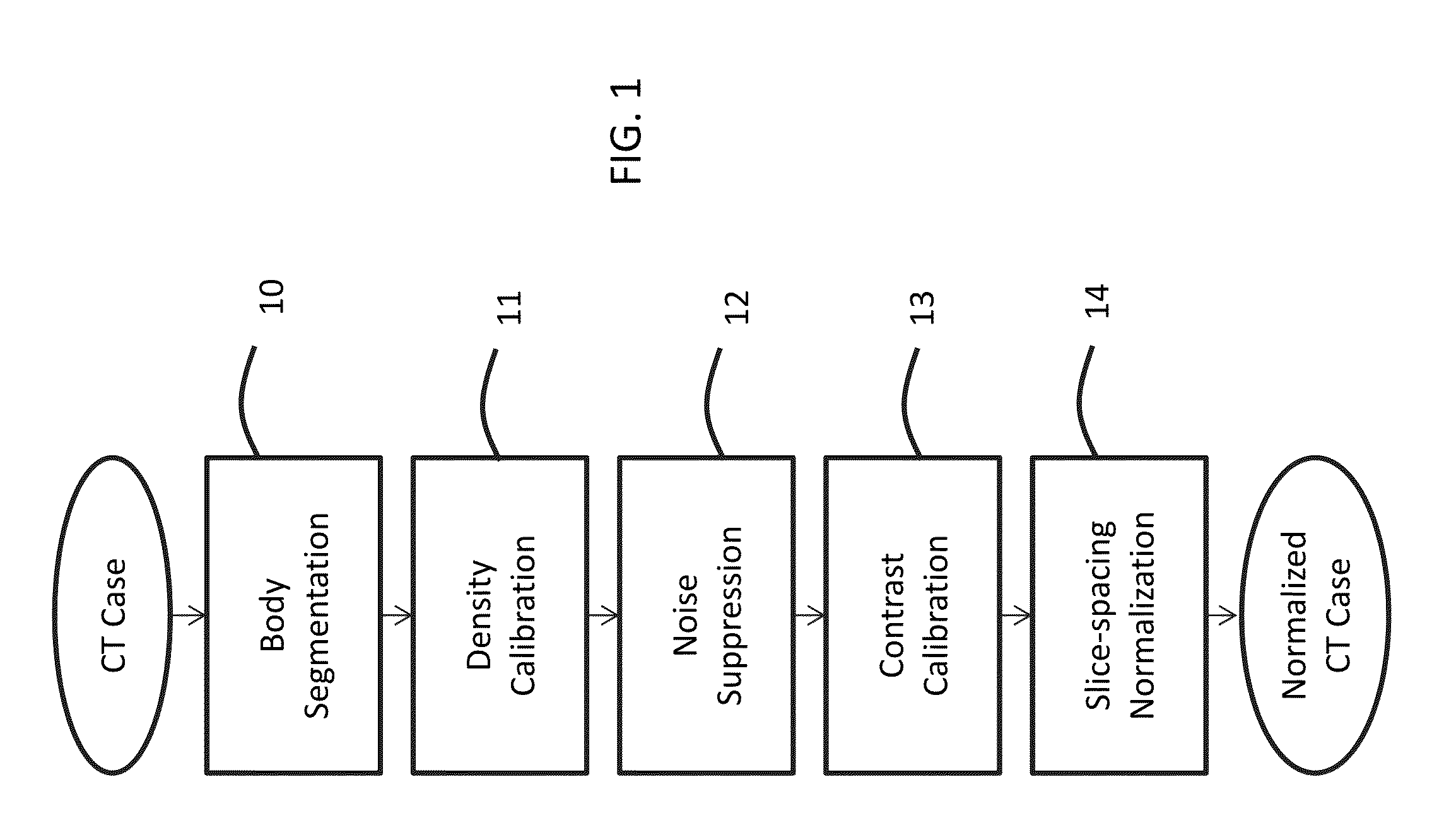Suppression of vascular structures in images
a vascular structure and image technology, applied in image enhancement, instruments, tomography, etc., can solve the problems of significant variability, difficult object detection in computer vision systems, and difficult object detection, so as to improve the rendering of selected anatomically suppressed or enhanced image data, and improve the detection of nodules
- Summary
- Abstract
- Description
- Claims
- Application Information
AI Technical Summary
Benefits of technology
Problems solved by technology
Method used
Image
Examples
Embodiment Construction
[0015]There are several approaches that may be taken to nodule detection, which may include template matching (e.g., Q. Li, S. Katsuragawa, and K. Doi, “Computer-aided diagnostic scheme for lung nodule detection in digital chest radiographs by use of a multiple-template matching technique,”Medical Physics, 2001, 28(10): 2070-2076; hereinafter “Li et al. 2001”), multi-level thresholding (e.g., S. Armato, M. Giger, and H. MacMahon, “Automated detection of lung nodules in CT scans: preliminary results,”Medical Physics, 2001, 28, 1552-1561; hereinafter “Armato et al. 2001”), enhancement filters (e.g., A. Frangi, W. Niessen, K. Vincken, and M. Viergever, “Multiscale vessel enhancement filtering,”MICCAI, 1998, 130-137; hereinafter “Frangi et al. 1998;” and Q. Li, S. Sone. and K. Doi, “Selective enhancement filters for nodules, vessels, and airway walls in two- and three-dimensional CT scans,”Medical Physics 2003, 30(8): 2040-2051; hereinafter “Li et al. 2003”), and voxel classification (e...
PUM
 Login to View More
Login to View More Abstract
Description
Claims
Application Information
 Login to View More
Login to View More - R&D
- Intellectual Property
- Life Sciences
- Materials
- Tech Scout
- Unparalleled Data Quality
- Higher Quality Content
- 60% Fewer Hallucinations
Browse by: Latest US Patents, China's latest patents, Technical Efficacy Thesaurus, Application Domain, Technology Topic, Popular Technical Reports.
© 2025 PatSnap. All rights reserved.Legal|Privacy policy|Modern Slavery Act Transparency Statement|Sitemap|About US| Contact US: help@patsnap.com



